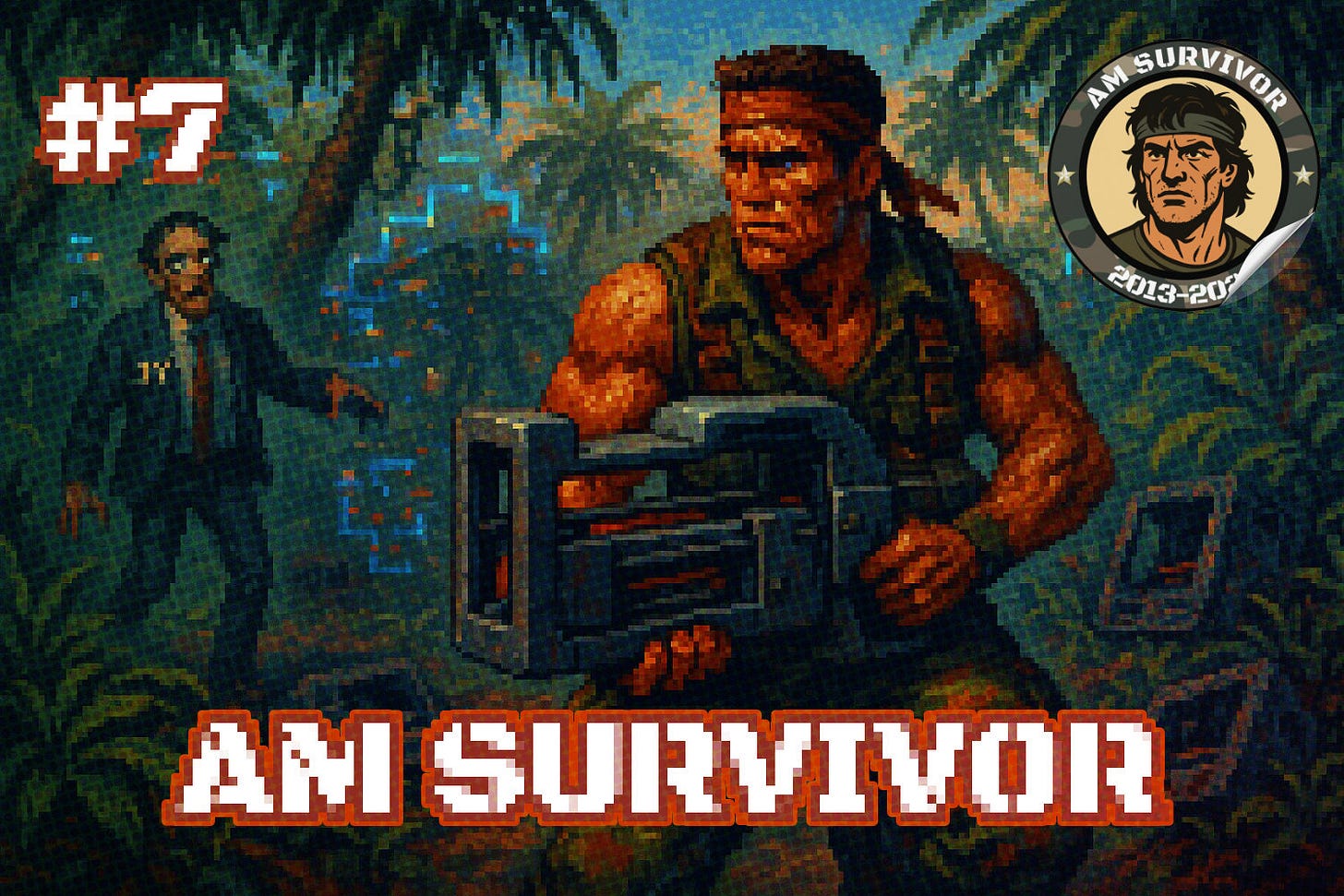The walking dead - no market fit, but still alive
AM Survivor #7
In the 3D printing industry, there is lot of companies that have been present on the market for years, even though it’s hard to point to any real demand for their solutions.
They operate, attract investors, exhibit at trade shows, and publish announcements about the next technological “breakthroughs” – and yet, it’s impossible to find evidence that their products are actually used in daily production by customers.
Their story is one of persistent belief in a revolution that never came, of waiting for a customer who never knocked on the door, and of hope that over time turned into a trap.
These are companies operating in technological niches – with their own, often very complex solutions, which in theory have many advantages, but in practice fail to find a place in the market.
Take, for example, a company that has been developing an extremely expensive and complicated ceramic and metal 3D printing technology for a decade, using a process far more complex than standard powder-based technologies.
The machines are large, costly, require specialized know-how, and involve a multi-step post-processing workflow.
Each public appearance sounds like a manifesto: a breakthrough in precision, an edge over other technologies, the future of aerospace and medical manufacturing.
The problem is that neither of these industries has adopted the technology as a standard.
The company does not disclose sales figures, does not show implementations, and does not speak about ROI for customers – because those examples simply don’t exist.
Instead, there are more trade show presentations. Everything runs like a perpetual motion machine fueled by promise: “just a little longer,” “we’re almost there,” “it’s just a matter of time.”
Another example involves companies that have been developing their own systems for ceramic or composite resin 3D printing for years. These are often lab-grade solutions born out of fascination with the material, not real market demand.
Printing ceramics or specialty materials does indeed have a place in scientific research, prototyping, or very narrow industrial applications, but building a full-fledged business on that proves unimaginably difficult.
The cost of the material, the complexity of post-processing, lack of standardization, and the limited durability of components all lead customers to ultimately choose simpler, more accessible technologies.
And yet these companies persist.
Their material offerings are regularly updated, their websites show coverage from industry events and conferences, and the “media” section is full of announcements about breakthroughs that never translate into real adoption.
There are also companies that design their own industrial 3D printers from the ground up, without using off-the-shelf components.
They often advertise themselves as the only solution in the world offering specific features: the largest build volume in its class, a unique material spectrum, a one-of-a-kind cooling system.
But no one buys them.
Why? Because the market doesn’t actually need “the largest build volume” or an extremely niche material – it needs solutions that are stable, predictable, and backed by global service teams.
Engineers at large industrial companies don’t want to be beta testers for experimental equipment. For them, reliability, spare parts availability, and technical support are what matter most.
Meanwhile, niche firms keep insisting that all it takes is one pilot project, one “big brand” that will trust, test, and prove the value. Unfortunately, that brand never comes. And time goes on.
One of the most visible symptoms of poor product-market fit is the shift in narrative from technology to strategy.
These companies speak less and less about specific use cases – instead, they talk about “visions of the future,” “industry transformation,” and “strategic partnerships.”
It’s a language that works well with investors and the media, but it doesn’t answer the core question: who is actually using your product and why?
Real market fit becomes clear when a product is being used, purchased, recommended, and repeatably deployed – not when it’s being presented at yet another conference or sent to accredited research labs.
The problem also lies in the fact that these companies are often built on passion and the belief that their technology will change the world. Their founders are engineers, scientists, material specialists who have poured their hearts and years of work into their own innovations.
In their narrative, there is no room for failure – only a “longer road to success.”
They believe the lack of sales is due to lack of market awareness, customer resistance to new things, the need for education.
And indeed – the market often does require education, but not indefinitely. At some point, you have to admit that if you haven’t been able to build a repeatable sales model after five, seven, or ten years, maybe the problem isn’t communication – maybe it’s the product itself.
From the outside, these companies might look like a success. Their websites are polished, they attend international trade fairs, they have trademarked logos. On LinkedIn, they regularly publish updates on their “next step of development.”
But up close, it’s a different picture: teams are minimal, and customers – if they exist – appear only every few months.
The internal pace of work revolves around the next iteration or material parameter adjustment. But what’s missing in the background is what should be the core of any business: sales, installations, customer support, scaling.
All of this is kept alive by stubbornness. Persistent, naïve, passionate optimism that eventually becomes a trap.
Because if the company has existed for so many years, if millions have been invested, if so many announcements of success have been made in the media – then surely giving up now isn’t an option.
So they persist
They work on the “improved version,” the “next generation,” the “new product line.” And they wait. For the customer who will finally appear. For the partner who will decide to trust them. For the market that will mature.
But the market doesn’t wait. The market chooses what’s available, predictable, scalable, and supported – not what’s visionary.
In the end, companies without real product-market fit survive only thanks to narrative. It provides oxygen – in the form of investors, grants, and media attention. But narrative doesn’t replace cash flow.
And while it’s possible to exist on the margins for years, admired by commentators and rewarded in innovation competitions, the real question remains unchanged: who pays for this product and why would they pay more than once?
Stubborn optimism is a beautiful trait – if it’s accompanied by a realistic assessment of the situation. Without it, it becomes a burden, leading to burnout, frustration, and the slow death of a company that perhaps should never have moved beyond the prototype stage.





Recently you posted what sounded like an 'Obituary" on Sygnis and Zortrax. Well, Sygnis shares have soared 300 percent since that article. Will Zortrax follow suit? Let's wait and see.
Certainly, not giving sales info especially when you have a partner like AM- COE handling marketing of the Ceramic range, Activ Cera, is a grievous fault and Zortrax needs to sack the whole communications Team. But, there could be manipulative top- down management here.
All said and done, there are a lot of zombies walking around, at least in in Polish AM :)
"One of the most visible symptoms of poor product-market fit is the shift in narrative from technology to strategy."
Wow, great observation.
I would add that they should be talking about a customer problem they're trying to solve to begin with instead of any technology!